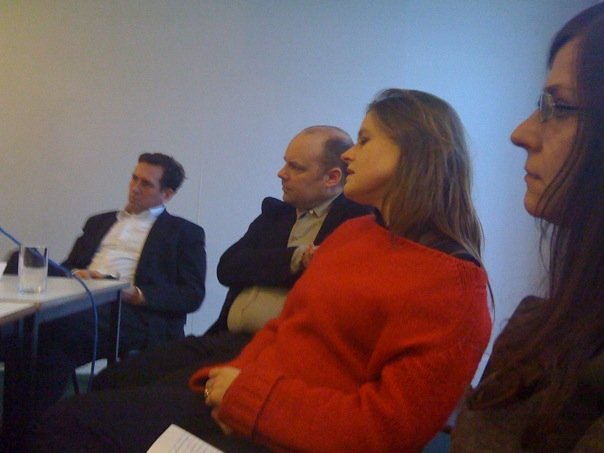Co-ordinated by Marie-Ange Brayer (FRAC Center Orleans) and Claudia Pasquero (AA INTER10/ecoLogicStudio), this symposium was inspired by the YOUNIVERSE exhibition curated by M-A Brayer in Seville for the BIACS3 and by research work done in the AA by various undergraduate units and postgraduate programs. I presented the work of Krets, in which I put focus to the fact that the concepts explored in the symposium are as valid during collaborative project development as in the final proposal.
The final panel was moderated by Brett Steele, director of AA.
“The relationship between architecture and science has been evolving throughout history mainly reflecting the ever-changing relationship between society and nature. The last century was shaken by a sudden jump in human’s understanding of his surrounding environment: from an intuitive/philosophical/mathematical understating of complexity and the turbulent dynamic of natural processes we moved into a measurable, material one; supported by our ever-increasing computational power we can now feel, measure, read and visualize complexity; this condition has allowed a direct material engagement with dynamic processes to escape the restricted field of science and permeate society at many levels. In architecture the effect is becoming evident and, most of all, nuanced: from purely metaphorical and figurative the new relationship between architecture and science is emerging as material and, ultimately, prototypical.
Moreover the ‘material’ of architecture has radically expanded its meaning, incorporating aspects that are virtual, potential, dynamic, and informational: we can now perhaps define this expansion as the most noticeable and important effect of computation in architecture and design. The symposium should present this emerging diverse palette of ‘material’ approaches indicating strands of research that are redefining both the relationship between science and architecture and between architecture and the architect itself.”
Excerpt from symposium brief

Leave a Reply